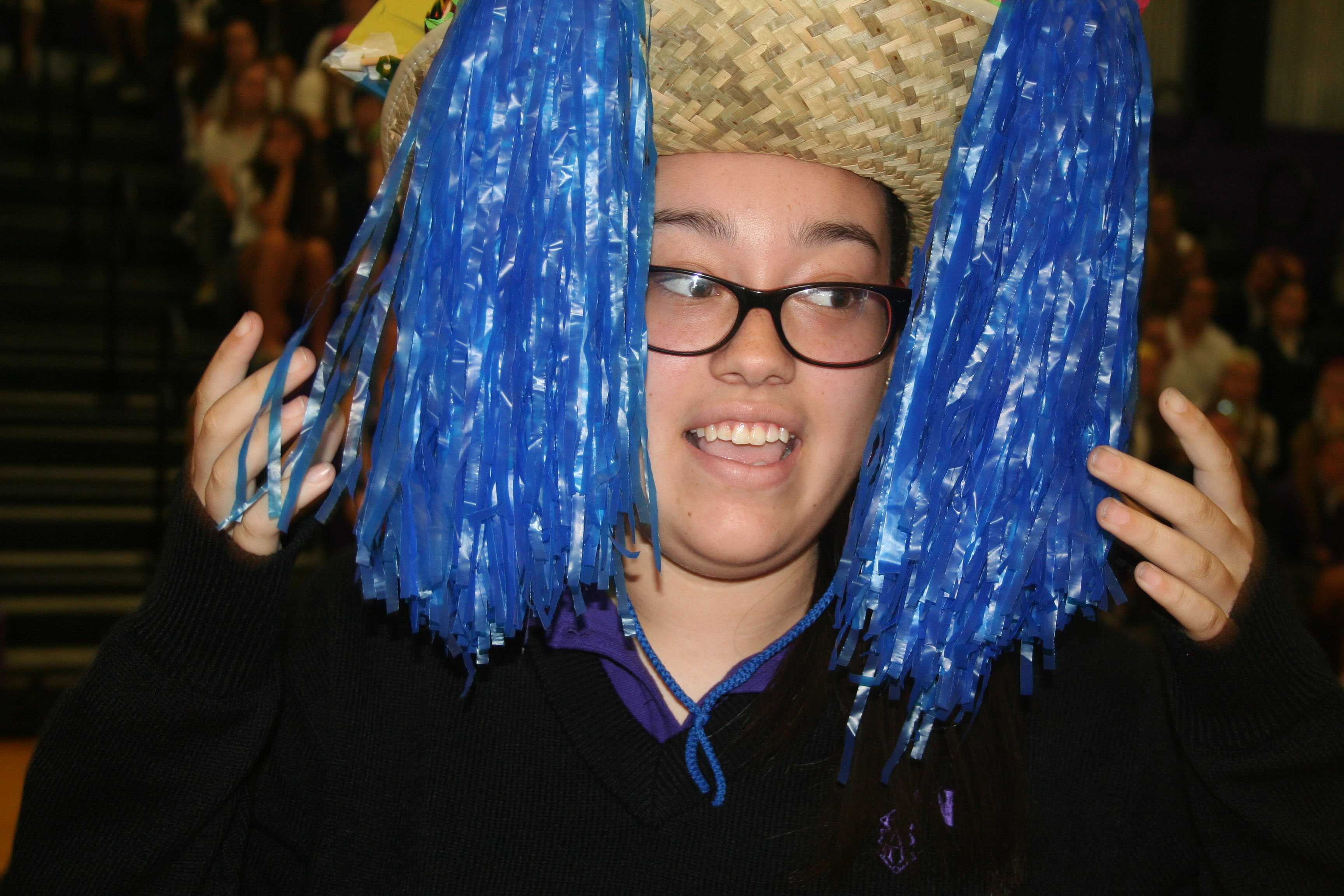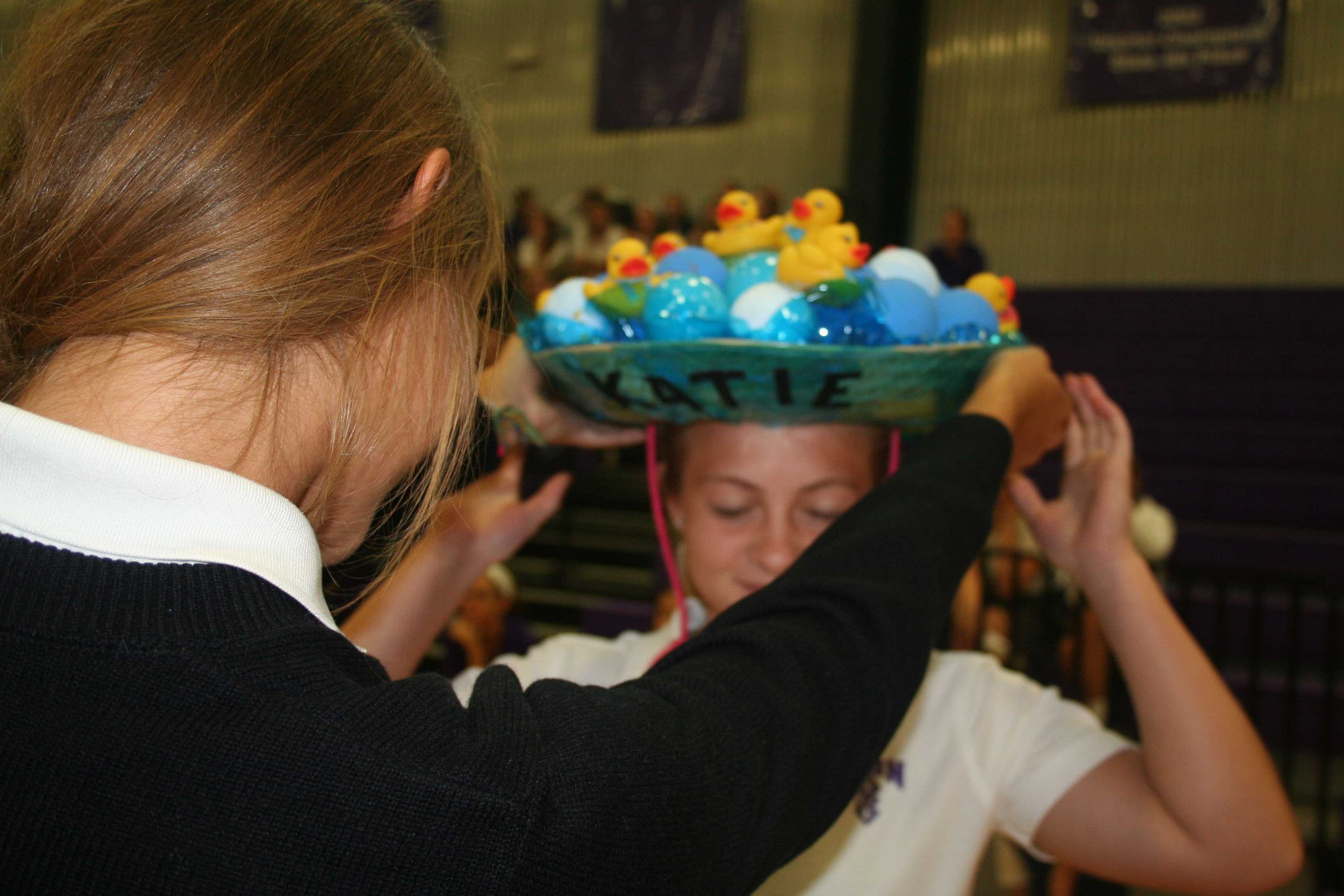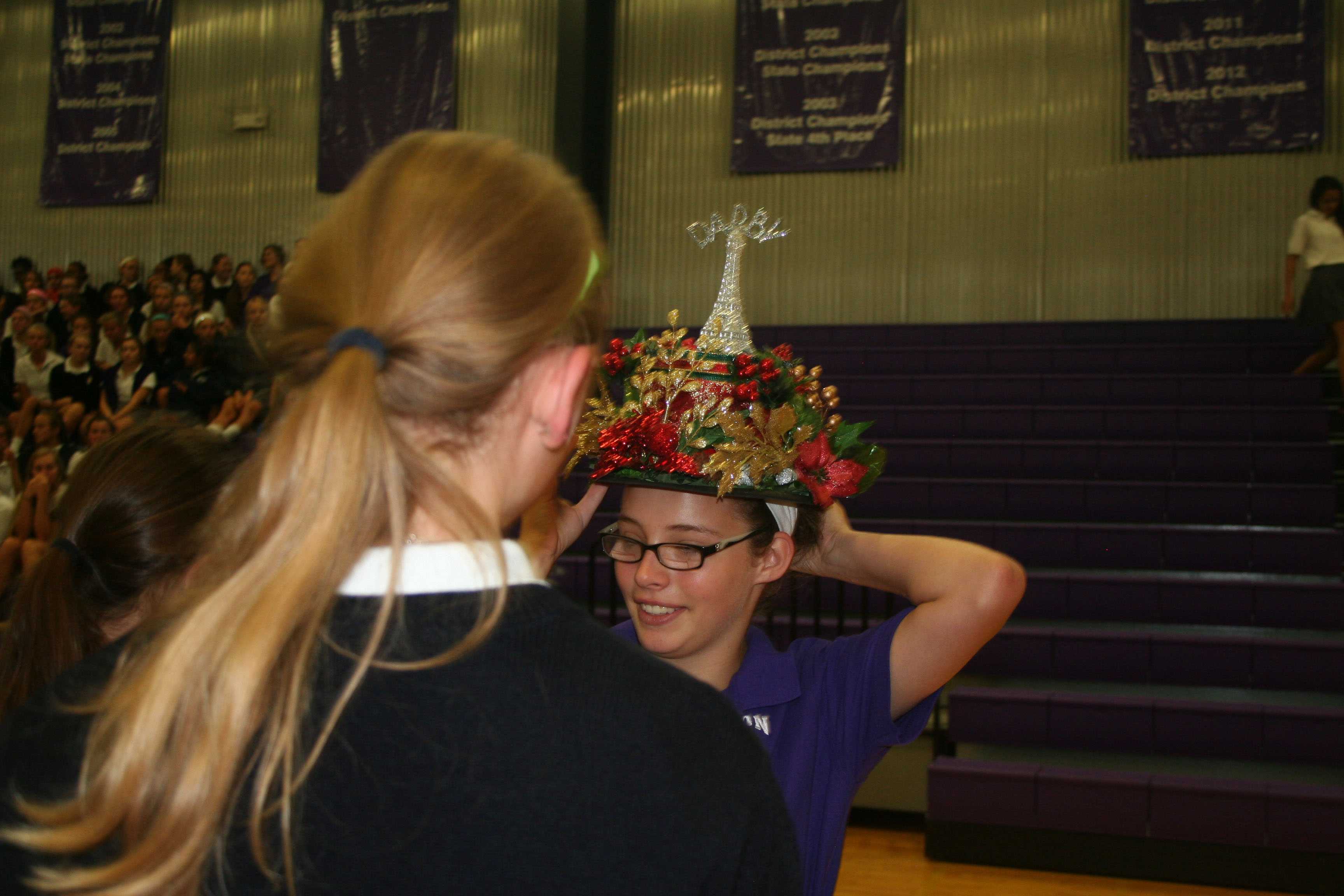The Evolution of Beanies
A simple red beanie cap with white binding and colored lettering of a freshman’s name is a far cry from what beanies have become today. Fifty years after the first beanies were placed on the heads of the incoming freshman, the tradition is still thriving. On Aug. 26 the Class of 2017 nervously awaited as they were called up one by one in the gym to receive the infamous beanies from their senior buddies.
“I was really nervous before I got my beanie,” freshman Claire Raulston said.
The freshmen paraded class to class for a week wearing their beanies, just as the freshmen in the Class of 1966 had 50 years earlier.
“When I was a freshman, the high school campus was brand new and exciting. Beanies were worn for a month and were seen as a positive way to learn who was a freshman in the new school,” Sheila Weiford, member of the Class of 1966, said. “I even decorated mine with campaign buttons because my father was in politics.”
Weiford was a member of the first freshman class to receive beanies in 1963. She has recently donated her beanie to the Alumni Association of Sion for their archives.
“Receiving our beanies wasn’t a big deal, our senior buddies gave us our beanies at a small party with cookies and coke,” Weiford said.
Twenty years after Weiford graduated, Sion English teacher Melissa Wilcox received her beanie as a freshman in the Class of 1987.
Wilcox still keeps her modest beanie in the storage closet of her classroom. The beanie is an actual beanie cap covered with small decorations of butterflies and bees with her name in pink lettering.
“I loved my beanie. I thought it was so cute, and for me, it was a positive experience because it was a way to welcome the freshmen, not to embarrass or humiliate us,” Wilcox said.
In 2000, then freshman Lauren Golden could be seen and heard down the hall as she wore a full body sandwich board and rang a cowbell to accompany the beanie on top of her head.
“When I was a freshman, beanies were at the peak of testing boundaries,” Golden said. “The seniors used their powers of making our beanies as a way of retribution for what they had gone through as freshmen.”
Though this year’s freshman class is now part of the beanie legacy, they have not yet completed one important part of the beanie tradition: making the beanies.
“I already have plans to make my own freshmen’s beanies,” Raulston said.
Today beanies are no longer a modest red beanie cap, a beanie with minimal decorations, or accompanied by a full body costume and a cowbell, but the intention is still the same as it was 50 years ago: to welcome the freshmen into the Sion community.








